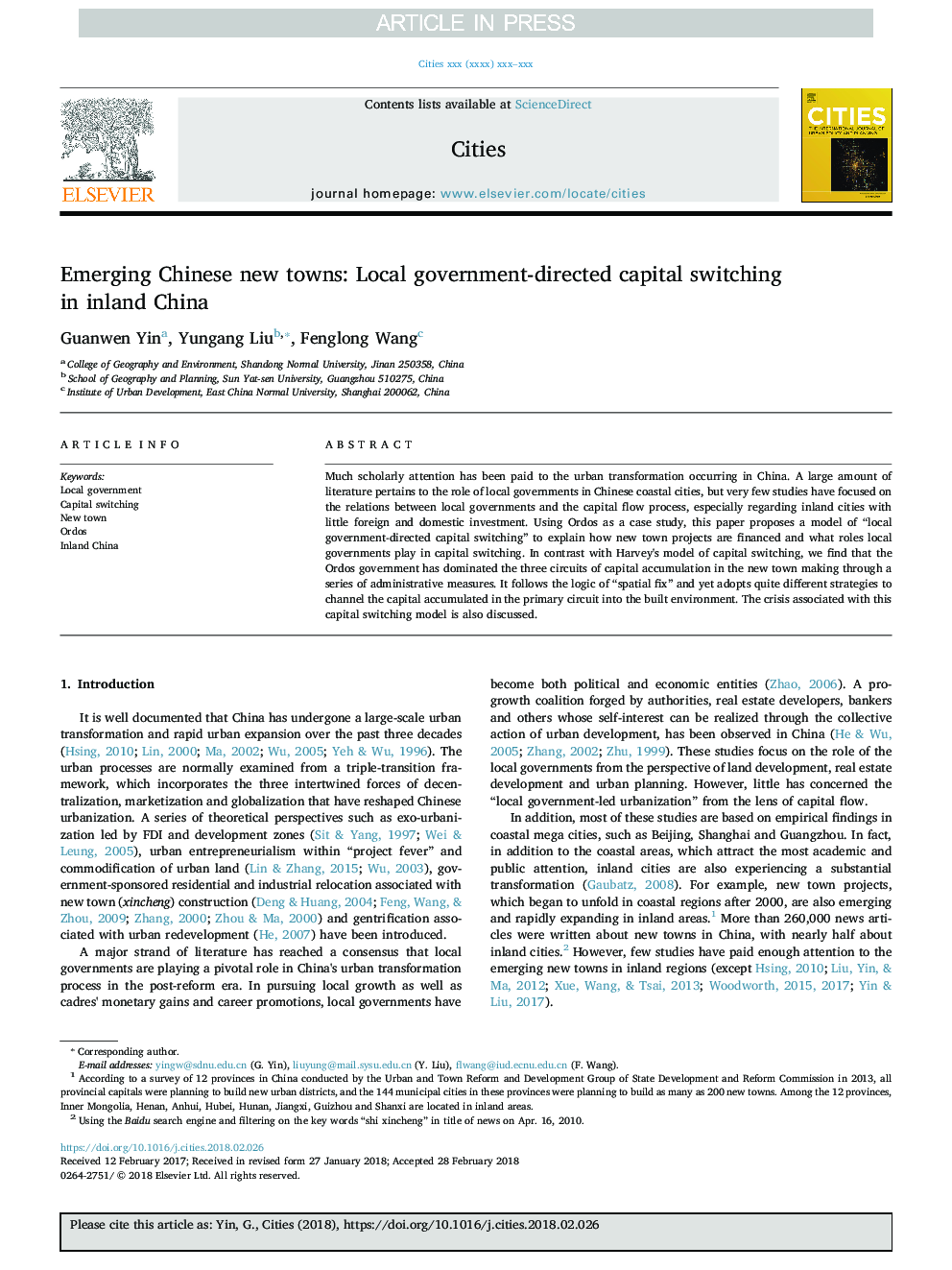| Article ID | Journal | Published Year | Pages | File Type |
|---|---|---|---|---|
| 7417111 | Cities | 2018 | 11 Pages |
Abstract
Much scholarly attention has been paid to the urban transformation occurring in China. A large amount of literature pertains to the role of local governments in Chinese coastal cities, but very few studies have focused on the relations between local governments and the capital flow process, especially regarding inland cities with little foreign and domestic investment. Using Ordos as a case study, this paper proposes a model of “local government-directed capital switching” to explain how new town projects are financed and what roles local governments play in capital switching. In contrast with Harvey's model of capital switching, we find that the Ordos government has dominated the three circuits of capital accumulation in the new town making through a series of administrative measures. It follows the logic of “spatial fix” and yet adopts quite different strategies to channel the capital accumulated in the primary circuit into the built environment. The crisis associated with this capital switching model is also discussed.
Keywords
Related Topics
Social Sciences and Humanities
Business, Management and Accounting
Tourism, Leisure and Hospitality Management
Authors
Guanwen Yin, Yungang Liu, Fenglong Wang,
